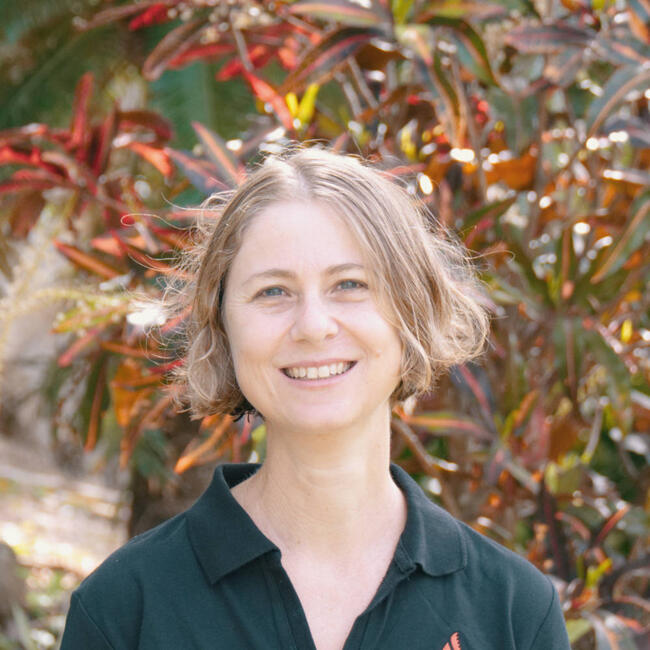Cape York cassowary survey
Cape York cassowary survey
Cape York NRM, the CSIRO and Lockhart River Traditional Owners spent four days trying to answer that question, walking across nearly 60 km of rugged terrain in Kutini - Payamu (Iron Range) National Park looking for ‘signs of cassowaries’.
The survey, which took place from 14-18 October 2019, was undertaken as part of Cape York NRM’s Biodiversity Bright Spots Rainforest project which focuses on threatened species.
Cape York NRM Community Engagement Officer Joey Dix, who helped coordinate the survey, said it was a both arduous and valuable experience.
‘We tried to cover as much ground as we could inside Kutini – Payamu over the four days and it’s not the easiest terrain’ he explained.
‘We were looking for cassowary scats, footprints, and of course, the birds themselves. The survey was done on foot which was challenging as there was a lot of fallen trees as a result of Cyclone Trevor which hit the Cape in March.
Although the walking wasn’t easy, it was a great experience, especially seeing the expertise of the Traditional Custodians of the land first hand.’
The survey’s objective was to see whether Lockhart River’s cassowary population was doing well.
CSIRO’s Matt Bradford, who is the survey’s Science Coordinator said while something is known about cassowaries living in the Wet Tropics, Cape York cassowaries, which are listed as Vulnerable under the Environmental Protection and Biodiversity Conservation Act, are a bit of a mystery.
‘Getting a sense of how many there are, where they live, what they eat, and where they like to wander is a key step in ensuring we know what to do to protect them into the future,’ he explained.
‘This survey was all about looking for signs of cassowaries (sightings, scats, footprints, vocalisations) to give us an indication of whether there is a healthy population in Kutini - Payamu.
We walked a total of 58 km and found some good evidence of cassowaries including two fresh scats, 11 sets of footprints, and even saw one adult and three juveniles. We were thrilled to see juveniles as this indicates a breeding population.’
Matt said there were fewer signs of cassowaries than expected, probably attributable to Cyclone Trevor which swept through the Cape earlier in the year.
‘There was only a moderate number of cassowary signs which may be due to the scarcity of fruit following Cyclone Trevor,’ he said.
‘However, the forest is well on the way to recovery with many species flowering and a few already dropping fruit.
Experience from Cyclones Larry and Yasi has shown us that the rainforest responds well to cyclone disturbance. Plants that like lots of sunlight will grow quickly in response to the broken canopy.
Many understory species that don’t often flower will take advantage of the light and space to produce a large fruit crop – all of which helps to support cassowary populations.
‘The survey was a great experience. The forest in the area is a complex mosaic of rainforest, beach rainforest and woodland.
My highlight was walking along the sandy creeks with the young Traditional Owners learning about the different animal tracks.
They were happy to get out into the bush and visit places they hadn’t been to for a while and to walk in areas they had only flown over.’
Matt said the data suggested that the cassowary population around in Kutini - Payamu was in good shape.
‘Evidence so far indicates that the cassowary population on Cape York is tracking along just fine and that they live in a variety of forest types, including rainforest, open woodland and coastal littoral vine forest (where the forest meets the sea),’ he said.
‘It is heartening to know this habitat is nearly completely protected they can move freely between the ocean and the mountains, and up and down the coast between forested areas.
‘It is vitally important that we don’t fragment their habitat by clearing forest and constructing fences and roads.’
After the wet season, the team will revisit the areas walked this year and survey new areas outside of Kutini-Payamu.
A report will be prepared on the health of the cassowary population in the Lockhart River region and further surveys will be conducted to monitor the health of the population.
Cape York NRM and CSIRO will also work closely with Traditional Owners to identify major threats to Cape York cassowaries and their habitat and put in programs to reduce those threats.
This project is supported by Cape York NRM, through funding from the Australian Government’s National Landcare Program
Appears in:
-
< prev
-
next >


